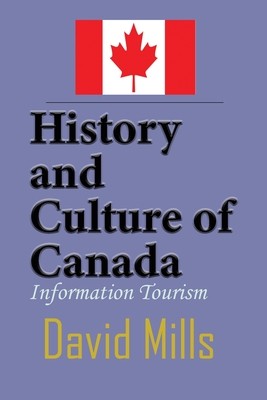
- We will send in 10–14 business days.
- Author: David Mills
- Publisher: SONITTEC
- ISBN-10: 1912483815
- ISBN-13: 9781912483815
- Format: 15.2 x 22.9 x 1.4 cm, minkšti viršeliai
- Language: English
- SAVE -10% with code: EXTRA
Reviews
Description
History and Culture of Canada. Information Tourism. Canada contains a mixture of diverse national and cultural groups. At the time of Canada's first census, in 1871, about half the population was British and nearly one-third was French. Since that time the proportion of Canadians of British and French ancestry has dropped to about one-fourth each, as fewer people have immigrated from the United Kingdom and France and considerably more have arrived from other countries in Europe, Southeast Asia, and Latin America. Because immigrant groups have tended to settle in particular locales, they generally have retained their cultural identity. For example, Ukrainians largely migrated to the Prairie Provinces, where the land and climate were similar to their homeland, and many Dutch settled on the flat, fertile farmland of southwestern Ontario, where they practiced fruit and vegetable growing as they had done in the Netherlands. Many Chinese, Portuguese, Greeks, and Italians have settled in specific sections of large cities, particularly Toronto, Montreal, and Vancouver. The mix of ethnic groups differs greatly from province to province. The proportion of people claiming ancestry from the British Isles ranges from about two-thirds in Newfoundland and Labrador to less than 5 percent in Quebec; the proportion of people of French descent ranges from a majority in Quebec to less than 2 percent in Alberta, British Columbia, Newfoundland and Labrador, the Northwest Territories, and Saskatchewan. More than one-third of Canadians identify themselves as being of mixed, or "multiple," origins.
EXTRA 10 % discount with code: EXTRA
The promotion ends in 21d.18:15:00
The discount code is valid when purchasing from 10 €. Discounts do not stack.
- Author: David Mills
- Publisher: SONITTEC
- ISBN-10: 1912483815
- ISBN-13: 9781912483815
- Format: 15.2 x 22.9 x 1.4 cm, minkšti viršeliai
- Language: English English
History and Culture of Canada. Information Tourism. Canada contains a mixture of diverse national and cultural groups. At the time of Canada's first census, in 1871, about half the population was British and nearly one-third was French. Since that time the proportion of Canadians of British and French ancestry has dropped to about one-fourth each, as fewer people have immigrated from the United Kingdom and France and considerably more have arrived from other countries in Europe, Southeast Asia, and Latin America. Because immigrant groups have tended to settle in particular locales, they generally have retained their cultural identity. For example, Ukrainians largely migrated to the Prairie Provinces, where the land and climate were similar to their homeland, and many Dutch settled on the flat, fertile farmland of southwestern Ontario, where they practiced fruit and vegetable growing as they had done in the Netherlands. Many Chinese, Portuguese, Greeks, and Italians have settled in specific sections of large cities, particularly Toronto, Montreal, and Vancouver. The mix of ethnic groups differs greatly from province to province. The proportion of people claiming ancestry from the British Isles ranges from about two-thirds in Newfoundland and Labrador to less than 5 percent in Quebec; the proportion of people of French descent ranges from a majority in Quebec to less than 2 percent in Alberta, British Columbia, Newfoundland and Labrador, the Northwest Territories, and Saskatchewan. More than one-third of Canadians identify themselves as being of mixed, or "multiple," origins.


Reviews